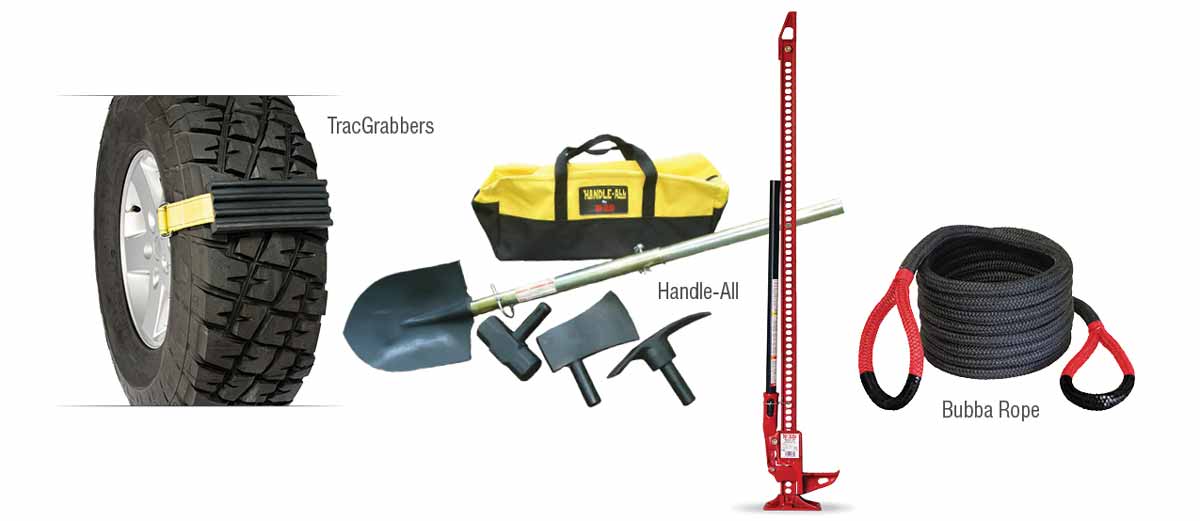It happens to the best of us. You think you can make it. But before you know it, you’ve buried your axles and your hunting buddy is laughing hysterically. Whether you’re driving in mud, snow or some nasty combination of the two, you’re bound to find yourself stuck somewhere in elk country eventually. But before you call the wrecker (a costly and shameful affair), perhaps a few tips and some “under the seat” gear may help you out of a jam. And remember, the best piece of gear you have is your brain. All the gear in the world is useless unless you know how to use it properly.
The first technique you can try is rocking from front to back in four-wheel drive, if you have the option. This works if you’re not too deep, but it can also dig you in even deeper. If you start to sink further, stop. It’s time to find some traction.
New on the market are TracGrabbers ($60/pair) that can be installed directly on the tires for both trucks and passenger cars. They’re the size of large chalkboard erasers, and slip around your wheels. In many cases, it’s just the right amount grip needed to get you out. Also consider reducing the air pressure in your tires to 18-20 psi, but be sure you have a way of reflating them.
Look around the woods for solid, dry objects to jam under the tires. Rocks, limbs, even floor mats are options. You may need to dig out some mud or snow to get these under the tires. A space and time-saving product to throw in the back of your rig is the Handle-All ($125) multi-purpose tool. If you’re buried to your elbows, you may need to jack up the truck altogether. And that’s where a Hi-Lift Jack ($80) comes in handy.
A Hi-Lift, or if worst comes to worst, your truck’s factory jack can be used to get one sunken wheel just a few inches off the ground at a time. Once in the air, you can jam boards, rocks or whatever under your wheels for traction. Keeping some 2×6 blocks under the seat will help give your jack a solid footing.
Of course, if you have a winch attached to your bumper, or a come-along, then it may be easier just to find a solid tree in the direction you want to go and hook up. Using chains and/or recovery straps instead of cables for the come-along might be a safer option, as cables tend to get old, break and turn into backcountry guillotines.
And if you’re lucky enough to have a buddy whose truck didn’t get stuck, then he should be able to help. Old-school chains and recovery straps are great, but Bubba Rope ($150) is a snatch rope that uses kinetic energy to whip you onto solid ground.
If you’re elk hunting, the last thing you want to spend time doing is digging out your rig. So be smart, don’t get stuck in the first place. But if you do, be prepared to get yourself out and back on the hunt.

Latest Content
ROOSEVELT COUNTRY – AN RMEF FILM
Thick, wet and rugged. Negotiating the steep forestland along the Oregon Coast to hunt, let alone find Roosevelt elk is challenging. Leupold & Stevens CEO [...]
Washington’s Wildlife, Habitat Get $4.3 Million Boost
MISSOULA, Mont. — The Rocky Mountain Elk Foundation and its partners allocated $4,345,186 for a series of projects to improve habitat for elk, mule and [...]
RMEF Weighs In, Colorado Unanimously Adopts Mountain Lion Plan
Ten days after Coloradans decisively rejected a ballot initiative that sought to ban mountain lion hunting, the Colorado Parks and Wildlife (CPW) Commission unanimously adopted [...]